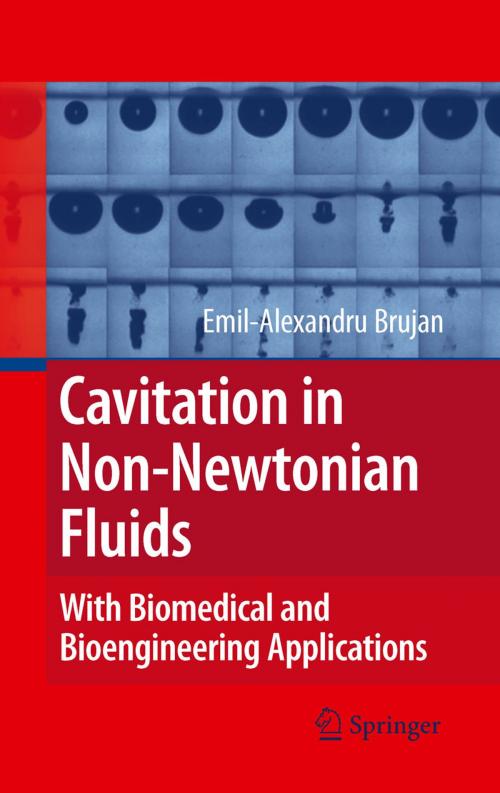Cavitation in Non-Newtonian Fluids
With Biomedical and Bioengineering Applications
Nonfiction, Science & Nature, Science, Physics, Mechanics, Technology, Engineering, Mechanical| Author: | Emil Brujan | ISBN: | 9783642153433 |
| Publisher: | Springer Berlin Heidelberg | Publication: | September 28, 2010 |
| Imprint: | Springer | Language: | English |
| Author: | Emil Brujan |
| ISBN: | 9783642153433 |
| Publisher: | Springer Berlin Heidelberg |
| Publication: | September 28, 2010 |
| Imprint: | Springer |
| Language: | English |
Non-Newtonian properties on bubble dynamics and cavitation are fundamentally different from those of Newtonian fluids. The most significant effect arises from the dramatic increase in viscosity of polymer solutions in an extensional flow, such as that generated about a spherical bubble during its growth or collapse phase. In addition, many biological fluids, such as blood, synovial fluid, and saliva, have non-Newtonian properties and can display significant viscoelastic behaviour. This monograph elucidates general aspects of bubble dynamics and cavitation in non-Newtonian fluids and applies them to the fields of biomedicine and bioengineering. In addition it presents many examples from the process industries. The field is strongly interdisciplinary and the numerous disciplines involve have and will continue to overlook and reinvent each others’ work. This book helps researchers to think intuitively about the diverse physics of these systems, to attempt to bridge the various communities involved, and to convey the interest, elegance, and variety of physical phenomena that manifest themselves on the micrometer and microsecond scales.
Non-Newtonian properties on bubble dynamics and cavitation are fundamentally different from those of Newtonian fluids. The most significant effect arises from the dramatic increase in viscosity of polymer solutions in an extensional flow, such as that generated about a spherical bubble during its growth or collapse phase. In addition, many biological fluids, such as blood, synovial fluid, and saliva, have non-Newtonian properties and can display significant viscoelastic behaviour. This monograph elucidates general aspects of bubble dynamics and cavitation in non-Newtonian fluids and applies them to the fields of biomedicine and bioengineering. In addition it presents many examples from the process industries. The field is strongly interdisciplinary and the numerous disciplines involve have and will continue to overlook and reinvent each others’ work. This book helps researchers to think intuitively about the diverse physics of these systems, to attempt to bridge the various communities involved, and to convey the interest, elegance, and variety of physical phenomena that manifest themselves on the micrometer and microsecond scales.















